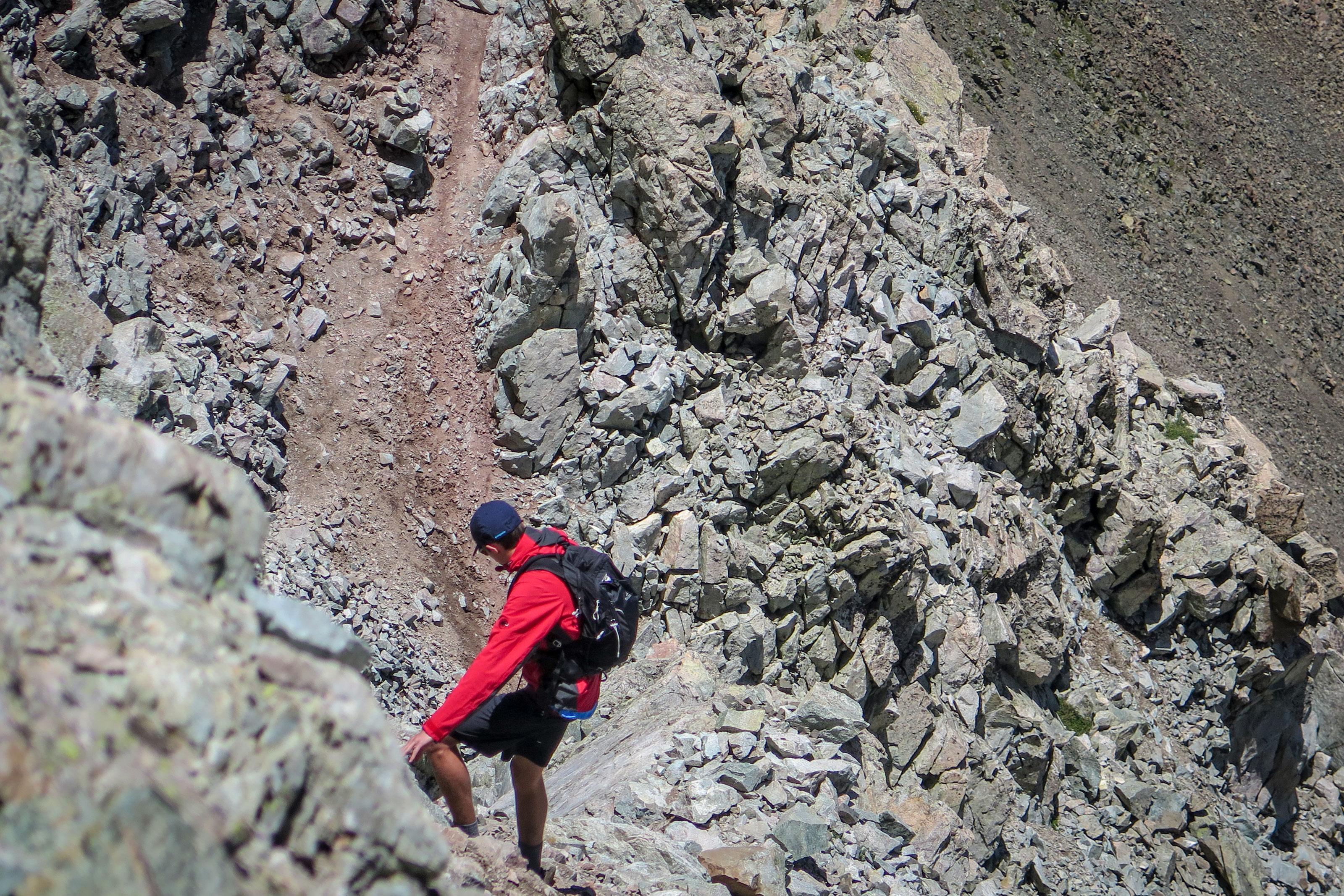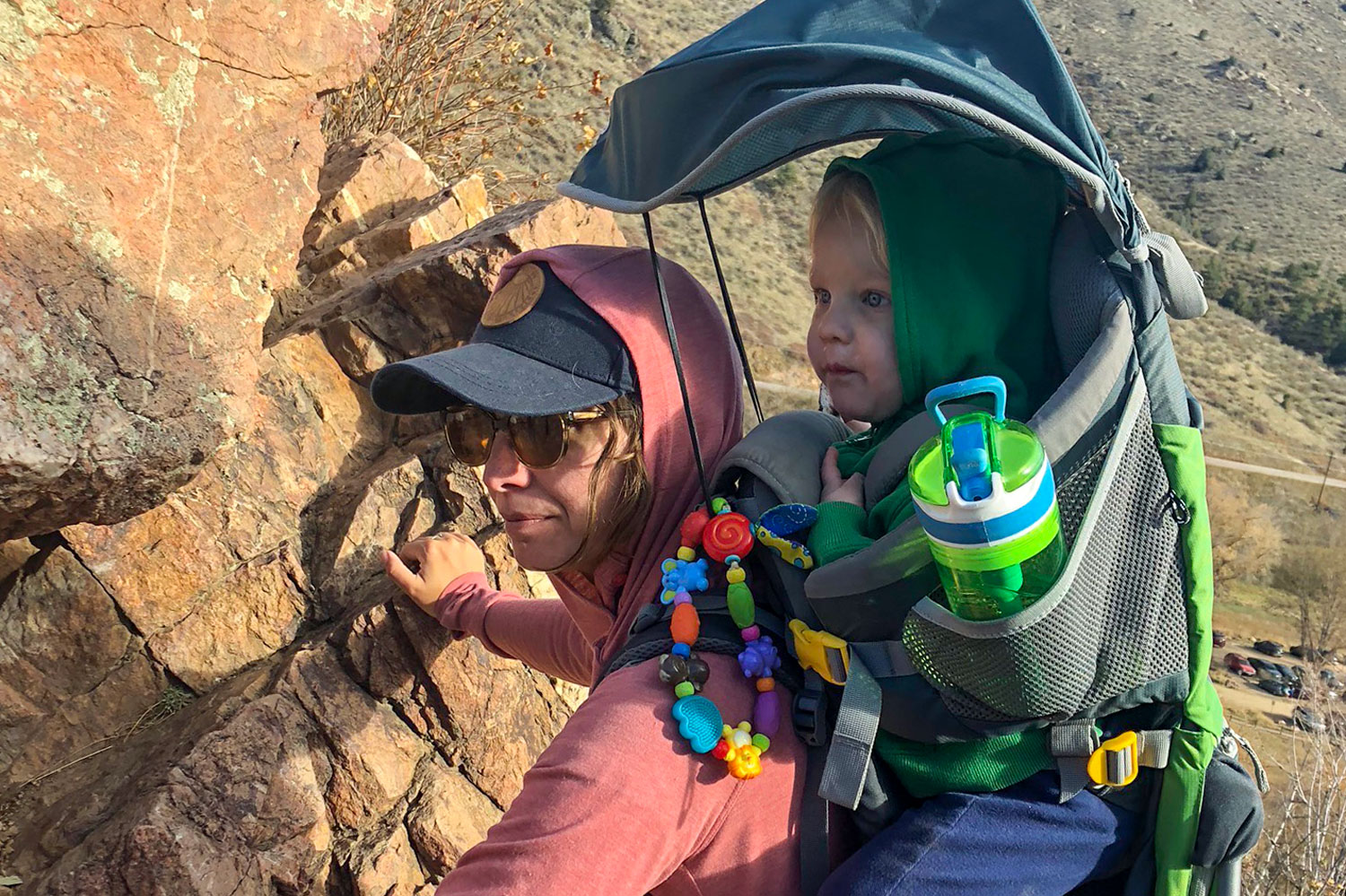

Denverite Kacie Peters and her family, like many in the Mile High City, frequently head to the hills. It’s an outdoor state after all, with a serious love of the lifestyle.
But as the mother of a two-year-old she started to ponder her outdoor recreation decisions. As she took on more difficult hikes, she realized “it’s not a sure thing that everyone gets through these hikes unscathed.” She’s also scared to death of skiing, because she thinks “it’s inherently dangerous. You know, Sonny and Cher, Sonny died skiing.”
In the end, she asked Colorado Wonders which was more dangerous: skiing or hiking?
“Or is it any more dangerous than climbing or white water rafting or all the other things we like to do here in Colorado,” she mused.
Eric Henderson, a mountain sports and public relations veteran with Meteorite PR, has some insight into the question. Back in 2014, a sports media company he’s worked with, Teton Gravity Research put out an infographic with the title: “Your Chance of Dying Ranked by Sport and Activity.”
“The number one is BASE jumping. You have a 1 in 60 chance of dying base jumping.”
The chance of dying skiing is shown on the infographic as 1 in 1.4 million participants; for mountain hiking it’s 1 in 15,700 annually.
Now, these numbers aren't entirely reliable. They’re dated for one thing, and Henderson said the insurance company site that released the original data is no longer online. So, best to take those with a big grain of salt.
“Clearly, it was a way for the insurance company to maybe reach a new demographic of folks that are maybe risk takers,” Henderson said.

So, how should recreationalists evaluate the relative risks?
While she was a graduate student at the University of Colorado’s School of Public Health, Lauren Pierpoint helped research high school sports injuries. Every time she is asked about risks, she tell people she “doesn’t have the answer.”
For years, the research project thoroughly tracked injuries in practice and competition. They used athletic trainers as data reporters. Pierpoint said there’s nothing comparable for outdoor sports.
“Most outdoor recreational sports that a Coloradan would be interested in almost all of them have no good data,” she said.
If you can’t really rely on data to decide what activity might be safest, perhaps the best advice is to be as prepared as you can. A 2001 family hike to Mount Evans for Melissa McQueen offers a cautionary tale. As she told Colorado Matters in 2012, first they got lost and then a storm hit. They spent the night on the mountain.
She took off her wet boots and put her feet inside a stocking cap. Later in the night, her feet bounced together, “and they made this kind of crunching noise and I always say it’s like two frozen chicken breasts hitting each other. It was at that point that I started to realize it might be more serious.”
McQueen ended up in the hospital with severe frostbite and lost several toes. The lesson she learned was expect the unexpected. McQueen still hikes, but now carries a GPS and extra warm clothes.
“We try to be respectful of the mountain and the weather now,” McQueen said. “People talk about owning a 14er or whatever and we’re like ‘no, no, the 14er let you come up to the summit that day. You didn’t own the 14er.’”
That thinking resonates with Meegan Moszynski, executive director of the National Ski Patrol. She said the risk of outdoor activities “depends on where you are, depends on the weather, depends on the day. I’ve skied for 36 years of my life and I could hurt myself any day skiing, but I could do the same thing walking outside in the street right now.”
Bottom line, Moszynski said “you always have to look out for yourself, come prepared, that’s the biggest thing. Know what you’re doing and ask questions and know your limits.”

Meteorite PR CEO Eric Henderson is also an expedition skier who has skied the north face of Everest. He discovered the scary edge of risk while working as a helicopter ski guide in Alaska. While flying down a steep fin of powder on Meteorite Peak, he took a nasty spill and cartwheeled hundreds of feet into a frozen waterfall.
The result that day was a broken neck. Henderson said he miscalculated his risk; the consequences are documented in a film by outdoor gear company Dynafit.
“Something may be going on in the back of your mind, which is like ‘Hey we should turn around or maybe we should stop or maybe these conditions aren’t safe.’ A lot of times it’s in our egos or our minds that keep us going,” he said.
Kacie Peters is a bit disappointed that there’s no good answer to her question. She’s backs better-funded research “not to prove that hiking is scary or that whitewater rafting is scary or that any of these things are scary,” but to help people like her understand the risks when they enjoy the outdoors.
And given the millions of people who do recreate outdoors in Colorado each year, she may be on to something.









